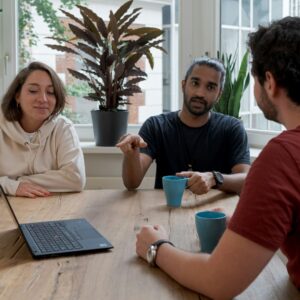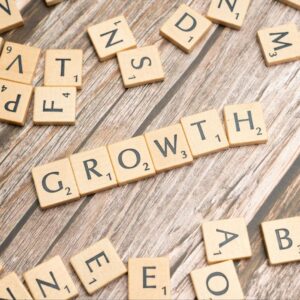

Research paper: Women in Open Banking – the opportunities and advantages
Dr Ashima Chopra | Women In Open Banking
01 Mar 2023
Opportunities and advantages in Open Banking for women – why would Open Banking offer opportunities and advantages any different from those offered to women in the technology sector?
Research into the practice of diversity and inclusion – with women being an essential part of diversity and inclusion in the workplace – point out, repeatedly, women’s contribution to making the workplace richer, metaphorically, and literally [1].
What opportunities and advantages, then, could Open Banking offer women? To answer this question is to start to map each critical, valuable, and identifiable contribution that women, as a biological sex, inherently add to the broader realms of innovation, experience, participation, process, community, and leadership. It is essential, too, to ask how and why women can make these contributions.
Defining technology
The definition of technology is “the application of scientific knowledge for practical purposes, especially in industry.” [2]
The distinction and relationship between the creation of technology, such as with bits and bytes, and the application of technology with its usefulness, is usually not made distinctly apparent in the use of the word “technology”. If we were to separate the creation and application elements of technology, it is the application element that interfaces with other environments.
Technological innovation is the creation of new products (inventions) and their applied use (innovations) [3]. The emphasis is on the term “use” in innovation, not just the process of producing or creating a product, as in “invention”. It is this applied use that allows technology to interact with the real-world.
There has been much effort to enable women to enter technology within specialised areas where they can contribute to the invention (coding, design) and encouragement towards STEM [4] subjects from a young age. What is not as widely discussed is the contribution that women can make at the intersections of the technology (invention) element with that of the “applied” (innovation) element within society, by the very nature of being a “woman”.
The ‘lived reality’ of women
We use 53 of our senses to bring the external world to life. [5] “The brain doesn’t simply collect and organise data, it actively regulates and conditions. Signals from the outside world are interpreted and layered with biases, prior expectations, and emotions. This integration of sensations and sensibilities plays a powerful role in our perceptions.” [6]
Perceptions create further expectations and specific emotions leading to individual experiences. The lived reality of women, as many studies would show, is more involved with community, empathy, and adaptability. “Biologically, the female brain is adept at processing high volumes of information, remembering key details, understanding the situation and reading other people.”[7]
The female nature is geared towards adaptability and towards resilience (to cater for offspring). While using innovation, it is such qualities that can harness perspectives to “increase entrepreneurial activities driven by innovation” [8], which is what gives “value” to innovations, thereby ensuring growth [9], be it of a company or the economy of a nation-state.
How and why is Open Banking able to utilise this innovation, experience, and value creation via entrepreneurship which leads towards growth, by providing opportunities and advantages to women?
In the larger technology sector, the narrative has focused on factors limiting the access of women into the technology sector, the lack of women in innovation, [10] and focused on women’s “given” characteristics that discourage them from pursuing careers in technology.
It is through changing the narrative by, for example, defining and then removing obstacles that obstruct women from entering new sectors (and not just naming the obstacle), and incorporating new narratives into the framework of Open Banking, not as an afterthought but instead as a seamless part of its conception that would enhance women’s opportunities and advantages in the Open Banking space.
In theory, ‘systems thinking’ offers a remarkably attractive solution [where] interventions to improve [a system] should no longer be conceptualised, designed, and implemented as isolated projects. Instead, systems thinking encourages us to consider interrelationships with other projects, programmes, and policies. The goal is to practice joined-up interventions that better anticipate obstacles and barriers to success, and leverage opportunities for reinforcing feedback from other activities. [11]
Use of data
Why would ‘systems thinking and systems practice’, if applied to Open Banking, provide women with opportunities and advantages in the Open Banking space?
As Adam Cox, co-founder of Open Banking Expo has observed, the Open Banking industry is beginning its journey and can “challenge” ways of doing things. Clubbing that insight with the very nature of Open Banking, where the core value of innovation lies at the intersection of using data for entrepreneurial activities to facilitate consumer benefit, the opportunities become endless.
In particular, the contributions by women become paramount as they have a level playing field – that is, access to data, for the benefit of any subset of society in an innovative manner. They only need to think about the endless applied permutations and combinations of their lived experiences, delve into their unique perceptions to see where its “use” can be maximised.
The advantage is the use of data, or access to core networks (banking, health, finance), not any complex instruments. All it requires is the use of data and how to apply its access in making it worthwhile to others. And, on the flip side, how to create data (or networks of data) to make the experience of those who do not have data that is accessible, to be made available, accessible, and verifiable.
Open Banking, as a fledgling industry, has its own advantages. The map for Open Banking can be drawn fresh and better, taking heed of learning lessons from more mature sectors where transformation and inclusion are struggles. When technology is applied onto systems, technology superimposes the systems’ failures, power structures, and existing processes. However, if technology is superimposed onto systems that are purpose-built, and take into account existing weaknesses and strengths, that technology can take advantage of interconnected layers via a “systems thinking, systems practice” approach, making it less vulnerable to weaknesses in the system. [12]
Having the ability to incorporate a model that allows for a diversity of innovation, from inception, gives Open Banking a lead in creating a model that works for all, learning from what did not work.
An ideal framework making Open Banking more inclusive and less prohibitive for women, both as users (using Open Banking) and contributors (working in Open Banking), would identify, define, incorporate and enable the following:
- An Open Banking ecosystem where data access can be used by sector, industry and individual.
- Systemic understanding of advantages of data access, and not limited to understanding just one point of data use.
- Seamless incorporation of multiple realities driving solutions that harness data access.
- Encouraging wider purpose of innovation not limited to immediate use for monetisation.
- Awareness of the socioeconomic realities that data access can influence.
- Formation of a vision of data access, and not merely the limited goal of access to specific data.
- Contributions driven not merely by metrics, or benchmark-driven outcomes, but driven by broader socioeconomic impact.
- An understating of the interrelatedness of intersections of data access and society.
- Redefining language surrounding Open Banking to include the wider array of impact of data access.
- Ensuring industry or enterprise outcomes are not just project based but are capabilities and impact based.
- Ability to identify, define, map and evaluate processes that encourage diversity of innovation.
Open Banking, with the ability to access data in a secure manner, has a simple starting point. This starting point, the ability to access data, can be used to make an impact across the socioeconomic spectrum of peoples and society. Its basic “tool”, its basic “invention”, is data access where data can be infinite, as is the outcomes its access can be applied to.
Given Open Banking is at the inception of its journey, and it is only just coming into its own, the opportunities are infinite. By incorporating a “systems thinking and systems practice” approach to inclusivity; maintaining an awareness of its interconnectedness to other systems; encouraging innovation at intersections of other ideas and realities; making its reach and application broader, as described in the possible framework above; Open Banking enables women to enter its “space”, and create their own opportunities, using their own lived experience, endlessly.
This short paper aims to open up the conversation on creating a framework that will allow women to step into the challenges offered by the opportunities and advantages in this Open Banking space, via creating and using applied solutions that truly matter to each individual woman (and society at large).
Note: A special thank you to Ellie Duncan, head of editorial and broadcast at Open Banking Expo and Kelly Stanley, co-founder and director at Open Banking Expo, for accepting this short paper and to Chris Higham, head of payments and cards at Secure Trust Bank, for kickstarting the conversation of Women in Open Banking (WiOB). A thank you, too, for the fantastic podcast on the WiOB website with Holly Coventry, VP international Open Banking payments at American Express; Adam Cox, co-founder and managing director of Open Banking Expo; and Mark Hartley, chief executive officer of Bankifi being interviewed by Ellie Duncan, which was a starting point for the conversation on WiOB.
Dr. Ashima Chopra, B.A. (Mars Hill, USA); M.A. (Bradford, UK); M.Sc. (Bradford, UK); PGDip. (Bradford, UK); Ph.D. (Bradford, UK) is a member of Open Banking Expo’s Women in Open Banking initiative.








